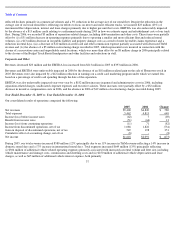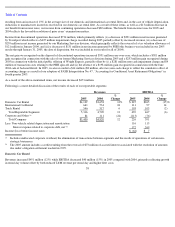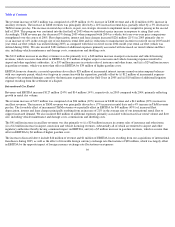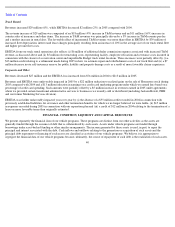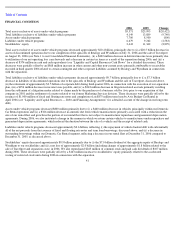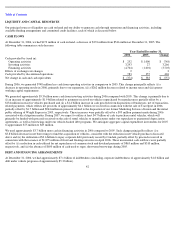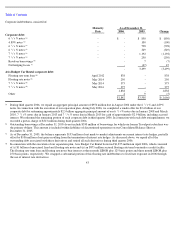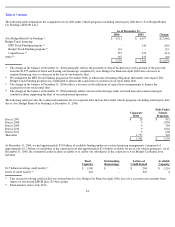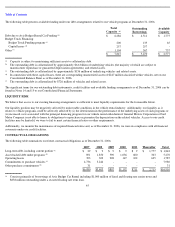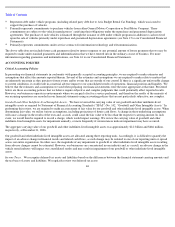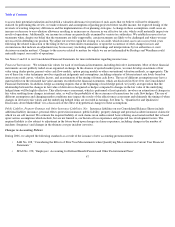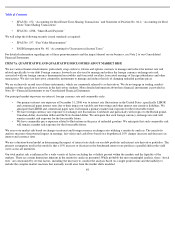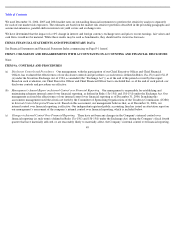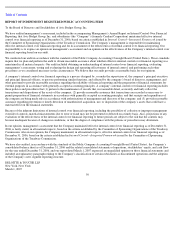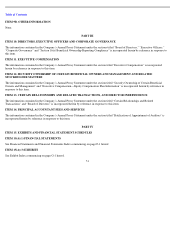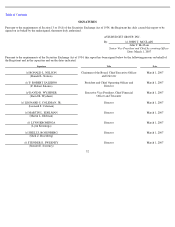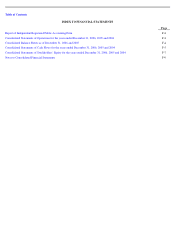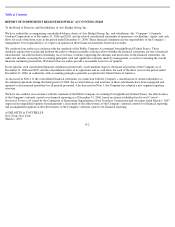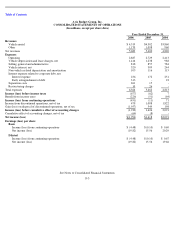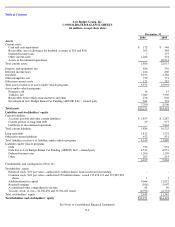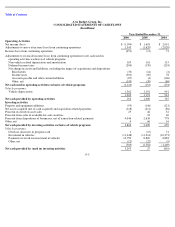Avis 2006 Annual Report Download - page 52
Download and view the complete annual report
Please find page 52 of the 2006 Avis annual report below. You can navigate through the pages in the report by either clicking on the pages listed below, or by using the keyword search tool below to find specific information within the annual report.
Table of Contents
to assess their potential realization and establish a valuation allowance for portions of such assets that we believe will not be ultimately
realized. In performing this review, we make estimates and assumptions regarding projected future taxable income, the expected timing of the
reversals of existing temporary differences and the implementation of tax planning strategies. A change in these assumptions could cause an
increase or decrease to our valuation allowance resulting in an increase or decrease in our effective tax rate, which could materially impact our
results of operations. Additionally, our income tax returns are periodically examined by various tax authorities. We establish reserves for tax
treatments when, despite our belief that the treatments are fully supportable, certain treatments are likely to be challenged and where we may
not succeed in defending our position. We adjust our reserves upon the closing of a tax audit, which in some cases can occur several years
following the related transaction or the filing of the tax return under examination, or upon the occurrence of other changes in facts and
circumstances that indicate an adjustment may be necessary (including subsequent rulings and interpretations by tax authorities or court
decisions on similar matters). Changes to the reserves related to matters for which we are not indemnified by Realogy and Wyndham could
materially impact our results of operations.
See Notes 2 and 10 to our Consolidated Financial Statements for more information regarding income taxes.
Financial Instruments.
We estimate fair values for each of our financial instruments, including derivative instruments. Most of these financial
instruments are not publicly traded on an organized exchange. In the absence of quoted market prices, we must develop an estimate of fair
value using dealer quotes, present value cash flow models, option pricing models or other conventional valuation methods, as appropriate. The
use of these fair value techniques involves significant judgments and assumptions, including estimates of future interest rate levels based on
interest rate yield curves, volatility factors, and an estimation of the timing of future cash flows. The use of different assumptions may have a
material effect on the estimated fair value amounts recorded in the financial statements, which are disclosed in Note 20 to our Consolidated
Financial Statements. In addition, hedge accounting requires that at the beginning of each hedge period, we justify an expectation that the
relationship between the changes in fair value of derivatives designated as hedges compared to changes in the fair value of the underlying
hedged items will be highly effective. This effectiveness assessment, which is performed at least quarterly, involves an estimation of changes in
fair value resulting from changes in interest rates, as well as the probability of the occurrence of transactions for cash flow hedges. The use of
different assumptions and changing market conditions may impact the results of the effectiveness assessment and ultimately the timing of when
changes in derivative fair values and the underlying hedged items are recorded in earnings. See Item 7a. “Quantitative and Qualitative
Disclosures about Market Risk” for a discussion of the effect of hypothetical changes to these assumptions.
Public Liability, Property Damage and Other Insurance Liabilities, Net.
Insurance liabilities on our Consolidated Balance Sheets include
additional liability insurance, personal effects protection insurance, public liability, property damage and personal accident insurance claims for
which we are self insured. We estimate the required liability of such claims on an undiscounted basis utilizing an actuarial method that is based
upon various assumptions which include, but are not limited to, our historical loss experience and projected loss development factors. The
required liability is also subject to adjustment in the future based upon changes in claims experience, including changes in the number of
incidents (frequency) and changes in the ultimate cost per incident (severity).
Changes in Accounting Policies
During 2006, we adopted the following standards as a result of the issuance of new accounting pronouncements:
47
•
SAB No. 108, “Considering the Effects of Prior Year Misstatements when Quantifying Misstatements in Current Year Financial
Statements
”
•
SFAS No. 158,
“
Employers
’
Accounting for Defined Benefit Pension and Other Postretirement Plans
”


